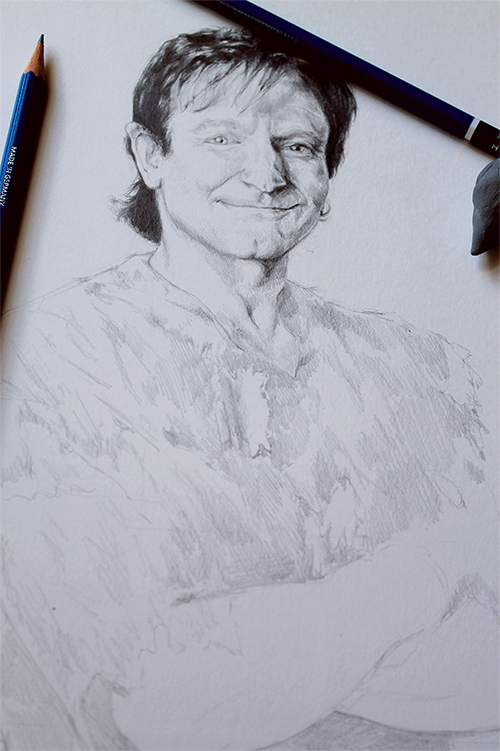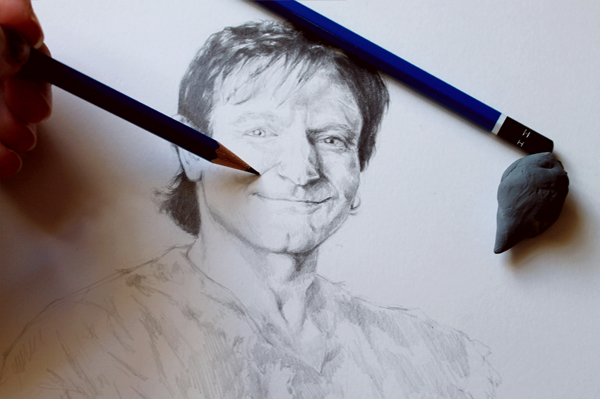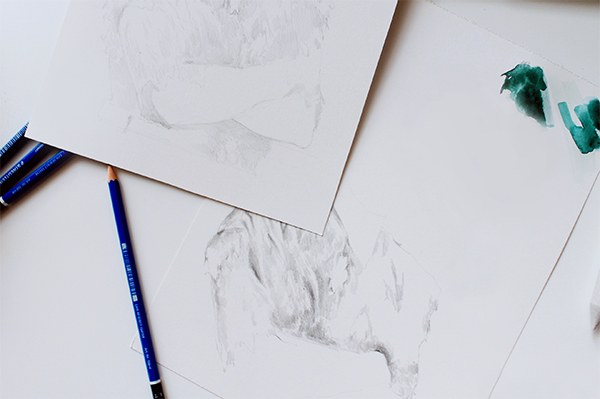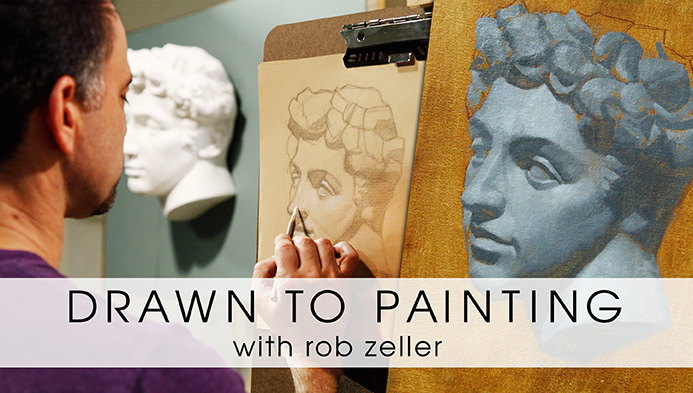No matter how much or how little experience you have with art, if you are like me, you’ll find that from time to time you still get a little scared by the thought of adding paint to a drawing that has taken you hours to create.

There’s a strong argument to be made for being detached from your work. Your creativity, your voice and your art live inside you and your spirit. That is where our passion for art and the message we want to express come from. This is where the value truly lies, not on a painting or a drawing. At the end of the day they are just stuff. Your art, creativity, voice, technique and skills are the things that endure. They reside within you and no one can ever take that away from you.
By saying this, I want to make the point that we shouldn’t have this fear of “ruining” a drawing. Or, at the least, we shouldn’t let that fear affect us. All this said, we are still human and there are times when we have spent two hours on a drawing, we are trying a new painting technique we’ve never applied before, or both! That was my case here.
I thought I’d show you how I navigated around the worry I had of ruining this portrait of Robin Williams that I drew after hearing the very sad news of his passing. This is a special portrait to me and I was worried of messing it up when adding watercolors and gouache.
Here are the steps I took for painting a drawing:

First, I did all of the pencil work on the portrait. Start with the basic outlines and focus on getting the likeness and proportions right. This is what you want to spend most time on, since it is the whole backbone of your artwork. If the proportions are not correct, it will carry throughout the whole process and stay permanently in your artwork, causing you to get frustrated when you finish and you find that you are not happy with the result.
Define areas of light and shadow and continue your drawing as far as you wish. Once you arrive at a state where you think you are finished, you’ll move on to working out how you want to incorporate color into your drawing.
Here, I was going for an illustrative style with a pop of color on the clothes. Maybe you want to add more or less color. Perhaps in the background, or paint the face. This is completely up to you. The process I applied to determine how I wanted to incorporate color and which technique I wanted to use, can be applied to any medium or style.
Incorporating color:

After deciding on where I wanted to apply the color, I was torn about which watercolor technique to use. In order to narrow it down, I created a thumbnail sketch with a very rough drawing of the composition and I tested the different techniques. I tried wet-on-dry and wet-on-wet watercolors. Doing this not only helped me get an idea of what it would look like, but it also allowed me to test my brushstrokes and get comfortable with the technique. I also mixed various different greens to get the perfect color I was aiming for.
Isolating the color area:

At this point, there are two different routes you can take. One option is to simply dive right in with your plan and start painting your drawing. If this is your case, then sketching your idea on paper probably helped you get more comfortable with which technique and colors you are going to use. That’s great!
If, like me, you are still a little worried, you might not pull of the new technique and you are not too thrilled with the idea of setting your paintbrush on your drawing, you can isolate the color area by redrawing it on a different sheet of paper and painting it exactly the way you will do so on your final drawing.

After doing this, you can go back to your original drawing and paint applying everything you learned and refined during this process.
Below you can see that I scanned the original portrait drawing and the isolated area of color. I then layered the color section over the drawing. If you also work with digital resources, you could try this technique as well. I don’t want you to think these are “rules” by any means. Instead, my hope is that you take these as ideas and suggestions, where you can pick and choose what fits best with your own process.
One final word about fear in art that I want to share with you is that, if you deal with this worry of “ruining” your artwork often, I encourage you to let go of that fear and detach yourself from the outcome.
The joy of art isn’t in the final product itself but in the practice, in the act of drawing and painting, in the hours we spend lost in color and brushstrokes while our hands and minds work away in a world all of our own. Find refuge in that beautiful place and worry not if the final piece will be “ruined” because “ruined” is a very subjective concept.
Create drawings and paintings with lifelike dimension and form! Learn the methods of the masters for pieces you’ll be proud to show off in Craftsy’s Drawn to Painting class.




good